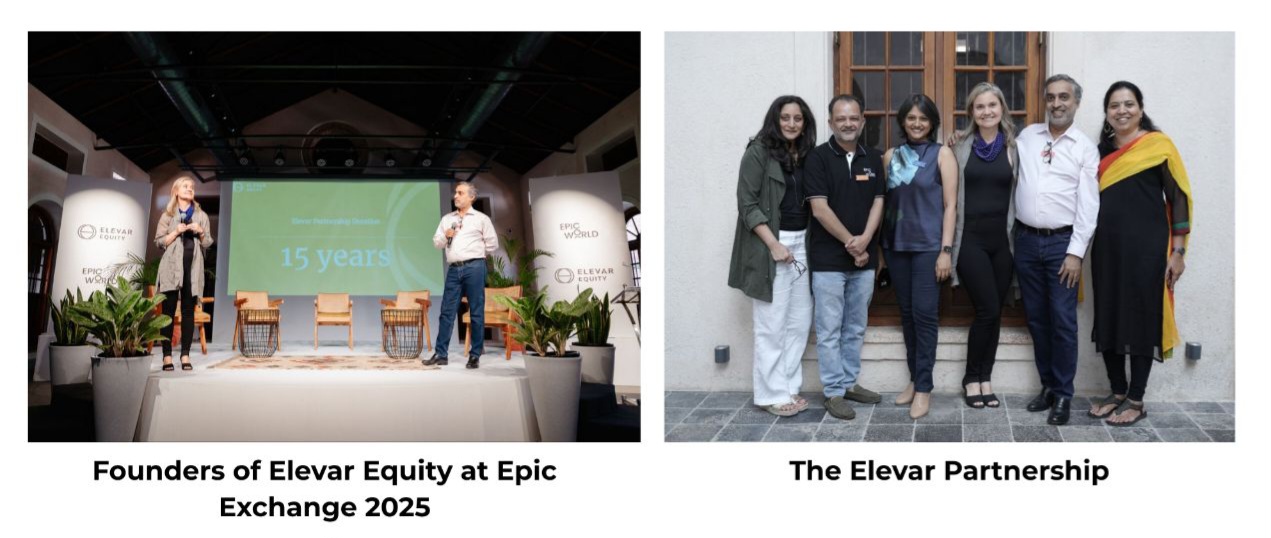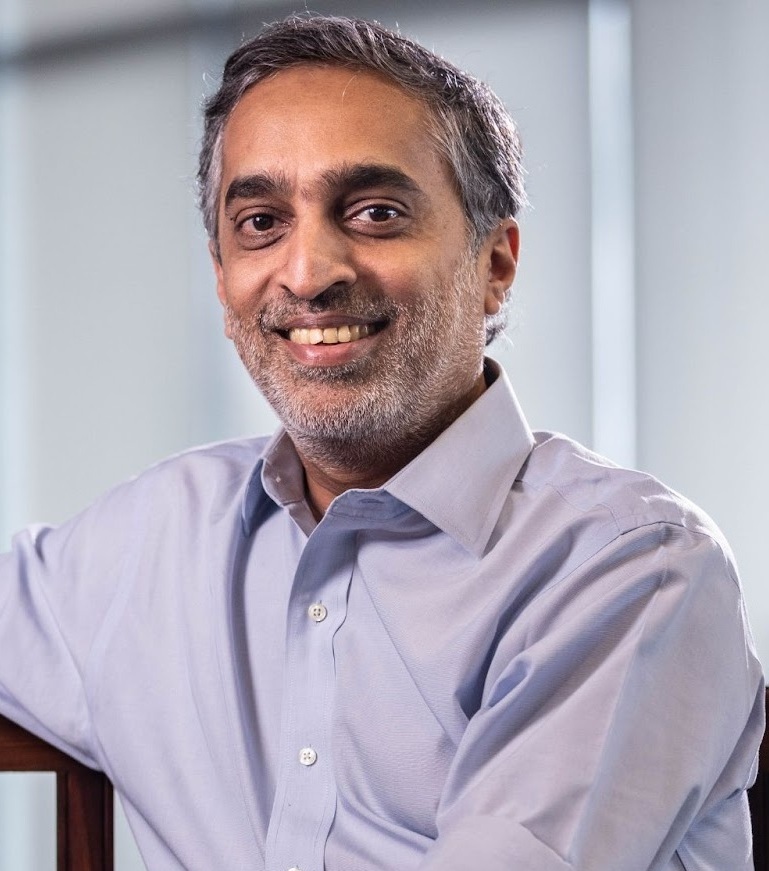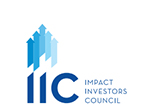|
Capital Provider Showcase
Dialogue with Sandeep Farias, Founder and Managing Partner at Elevar Equity, and Chair and Co-Founder at EPIC World
|
|

1 Elevar Equity has built a strong reputation for backing early-stage enterprises that provide core solutions for Entrepreneurial Households. How would you describe your overall investment thesis, and how has it evolved in the context of technology for development?
|
Our investment thesis, which we call the "Elevar Method" or "e.M™," is a customer-centric approach where we back early-stage, purpose-driven companies that deliver essential products and services to a segment we've termed "Entrepreneurial Households". These are households positioned above subsistence but below affluence, characterized by multiple income streams and a high propensity to invest in their own growth. Our thesis is built on four pillars: a sharp customer focus, ensuring long-term business scalability, backing driven leadership, and scaling responsibly. A core concept for us is the "Twin Flywheels" model, which aligns a company's financial growth (the Business Flywheel) with the value delivered to customers (the Customer Flywheel). We measure success by how business performance drives customer access and prosperity, which in turn amplifies business success, creating a compounding growth cycle.
Our thesis has evolved significantly in response to changing market dynamics and technology. Our journey began between 2004-2008 by investing in the commercialization of microfinance, which laid a customer-centric foundation for our work. Recognizing broader needs beyond credit, from 2009-2013 we expanded into adjacent sectors like affordable housing finance and MSME lending. As macroeconomic shifts and a rapid push towards digitization took hold between 2014-2018, we embraced digital financial services and made strategic investments in scalable, tech-driven solutions for education, healthcare, and agri-supply chains. More recently, from 2019-2024, the pandemic further accelerated digital adoption for the customer, transforming our customers into highly tech-savvy individuals, and we responded by expanding into emerging high-growth areas like employability, sustainability, and mobility.
|
2
Technology-for-development often promises inclusion, but many models struggle with consistent adoption or monetization. In your experience, which sub-sectors hold the strongest potential for driving technology adoption in underserved markets, and what factors enable such adoption at scale?
|
In our experience, sub-sectors like hyperlocal services, financial services, healthcare, and education hold the strongest potential for driving technology adoption in underserved markets, particularly through "phygital" models. These hybrid solutions combine the efficiency and reach of a digital platform with the trust and personalization of a physical, human touchpoint. This approach builds trust and overcomes last-mile delivery challenges.
The "Reimagining Local Economies" report by EPIC World, and our own work have revealed key factors enabling this adoption:
- Clear, Pent-Up Demand: We see a massive, underserved demand for quality local services. The report found that 78% of households are willing to pay more for better healthcare and 74% for better education if delivered locally.
- Willingness to Invest: These households are not just surviving; they are actively investing in their future. The report found that a striking 86% of households plan to make major investments in the next one to two years, signaling their financial resilience and aspirations.
- Data-Driven Distribution: A critical barrier to scale is the location challenge, where distribution into non-urban markets is expensive and speculative. To solve this, EPIC World is pioneering tools like EPIC Intelligence, a platform that provides the "quantitative voice of Entrepreneurial Households". It delivers data-backed location insights to eliminate guesswork, helping companies scale efficiently and affordably.
Our portfolio company Curebay is a prime example of a successful phygital model. It combines a network of physical eClinics in rural Indian villages, field agents called Swasthya Mitras and a robust technology platform that provides teleconsultations, IoT-enabled diagnostics, and electronic health records. This hybrid approach makes quality healthcare both accessible and affordable, directly addressing the demand we see on the ground.
|
3
Could you share examples from your portfolio where technology-for-development is already creating measurable change?
|
Our 2024 Impact Report details several of our companies using technology to create significant, measurable impact:
- Varthana: This company empowers affordable private schools by providing financial support and hands-on guidance to improve learning outcomes. A key part of its model involves technology, specifically through its "Unlock program," which helps schools integrate digital learning into their classrooms. This has enabled Varthana to support 4,108 schools , impacting over 2.9 million students.
- FinX: Our recent investment in FinX, an employability-tech platform, addresses the critical gap between college education and industry requirements. It focuses on upskilling young graduates with the specific, in-demand skills needed for jobs in India's rapidly growing financial services sector. The platform uses technology to deliver industry-relevant training and has successfully trained 42.6k students.
- Nuvemshop: As a leading e-commerce platform in Latin America, Nuvemshop empowers MSMEs by providing integrated digital tools for online stores, payments, and shipping. The platform has served over 573,000 MSMEs and processed 37 million transactions (LTM), helping small entrepreneurs digitize and grow their businesses.
|
4
In the Future of Work segment, what risks or trade-offs do you believe the ecosystem tends to underestimate in these models?
|
In the "Future of Work" and employability sectors, we believe the ecosystem often underestimates several critical, nuanced risks:
- Solving for the Household, Not Just the Individual: From our field visits, we see that a common pitfall is designing skilling programs that focus only on the job seeker. True success requires solving for the entire family unit, as parents are often the primary financial decision-makers and their economic constraints and aspirations must be addressed for any program to achieve uptake and be truly impactful.
- Measuring Value Through Economic Mobility: We find that the ecosystem frequently relies on simple metrics like enrollment numbers, which don't capture true value. For us, the most important—and more difficult—indicator is tangible economic mobility. The success of a program should be measured by its direct impact on securing quality employment and measurably enhancing a family's income. Especially for the gig economy, companies need to move beyond the plus and play model to a more holistic approach on solving essential needs, alongside skilling and employment.
- The Skills-to-Jobs Mismatch: We see a significant risk of creating training programs that are disconnected from real, evolving market demands. Without a deep, ongoing feedback loop with employers, even the best-intentioned programs can equip youth with skills that are not in demand, failing to deliver on the promise of better livelihoods.
|
5
What indicators do you use to assess whether technology is truly improving productivity, profitability, and/or resilience for these enterprises – beyond digital adoption numbers?
|
We use a multi-layered Impact Measurement Framework to assess genuine impact far beyond surface-level digital adoption metrics. Our process starts with understanding a household's financial life through Core Transaction Value (CTV), a metric we developed to map their multiple cash inflows and outflows to identify key business and investment opportunities. Our framework then measures how well a company's technology-driven solution improves that economic reality through three pillars:
- Community-Level Transformation: We assess household-level change through metrics like the percentage of customers previously excluded from a service and the potential for long-term asset building.
- Business Model Effectiveness: We ensure the business is sustainable and customer-centric by tracking core metrics like customer margin, customer acquisition cost, and operational efficiency.
- Scale and Widespread Impact: We validate the potential for broad, meaningful change by measuring the volume of customers served and the total value of products and services delivered.
By linking this framework back to our initial CTV analysis, we can directly assess whether a technology is improving a household's productivity, profitability, and overall financial resilience.
|
6
What does the next 20 years for Elevar look like, and how does this tie into what EPIC World is building? Are there emerging trends, business models, or impact areas that you believe will define the next wave of investment opportunities?
|
Elevar Equity will continue its crucial role on the capital allocation side by following the customer journey. The model itself is a comprehensive approach that combines three key pillars: aligned capital, data-driven distribution insights, and intentional brand building for the customer. This strategy accelerates the growth of companies serving these households, with the primary impact being the economic empowerment of this vast, underserved market to drive long-term, sustainable growth.
Elevar Equity's next 20 years are also going to leverage the capabilities of EPIC World, a global platform building upon Elevar's two-decade foundation. EPIC World is here to unlock a $100 trillion opportunity* in India over the next 20 years, focusing on the 247 million Entrepreneurial Households who already drive $10 trillion in Core Transactional Value (CTV). As a data-driven insights platform, it's set to revolutionize how distribution is built at scale for businesses focused on Entrepreneurial Households. Ultimately, EPIC World’s objective is to catalyze the creation of 50+ specialist blue-chip companies within the next ten to twenty years, intending to accelerate the economic momentum of Entrepreneurial Households and shift how the world of capital invests in it. By leveraging insights from EPIC World, Elevar will continue to follow the customer journey with greater precision, ensuring it can identify and back the most essential core solutions that drive economic mobility for Entrepreneurial Households.
*This data is from the “The EPIC Opportunity Report” report by Praxis Global Alliance and EPIC World
|
7
What is EPIC Intelligence and how does technology play a role in solving distribution needs for capital allocators and companies?
|
EPIC Intelligence is a geospatial-temporal intelligence service designed to guide businesses on where and how to expand in rural and semi-urban India. It provides granular, actionable, AI-led decisions to drive faster revenue and profit.
AI and data science are central to its offering, the Chief Location Intelligence Officer (CLIO) As-A-Service. CLIO utilises a combination of public datasets, proprietary data on Entrepreneurial Households, and the client's own internal data. This information is geospatially mapped to deliver precise insights and decisions on market expansion, micro-catchments, and branch optimisation. Unlike typical SaaS tools that only provide data, CLIO's platform acts as an embedded partner, offering clear recommendations and taking accountability for the outcomes, thus enabling smarter and more profitable distribution strategies for companies and capital allocators.

|
|
|
Sandeep Farias, Founder and Managing Partner at Elevar Equity, and Chair and Co-Founder at EPIC World
Sandeep Farias is Founder and Managing Partner at Elevar Equity, and Chair and Co-Founder at EPIC World. Sandeep is widely regarded as an early pioneer in impact investing. He plays a leadership role in Elevar’s global teams, determining the firm’s investment strategy, entrepreneur selection, working with entrepreneurs to think through inflection points in their entrepreneurial journeys and driving fund performance. In the past, he led the corporate law team at Nishith Desai Associates and also established Unitus in India in 2004. Sandeep has an integrated law and arts degree from the National Law School of India University (NLS).
About Elevar Equity
Elevar Equity pioneered the commercial approach to impact investing, backing seasoned entrepreneurs building large-scale, enduring businesses focused on Entrepreneurial Households. Elevar was early in identifying the entrepreneurial trends within these households and has consistently invested in this thesis since 2006 starting with microfinance and quickly expanding to affordable housing, healthcare, education, agriculture, and small businesses (MSMEs). With two decades of ground-up field insights and the scale journeys of 52 companies, the Elevar Method of investing has delivered high-priority services to over 60 million Entrepreneurial Households across India and Latin America.
|
|
About Impact Investors Council:
Impact Investors Council, India (IIC) is a member-based national industry body formed with an
objective to build and strengthen the impact investing eco-system in India. To know more about our work visit https://iiic.in or reach out to secretariat@iiic.in
|
Disclaimer: Data and Information in this newsletter is made available in good faith with the exclusive intention of helping market and ecosystem players, policymakers and the public build a greater
understanding of the Indian impact investing market. The data is collated from sources believed to be reliable and accurate at the time of publication. Readers are urged to exercise independent judgment and diligence in the
usage of this information for any investment decisions
Some of the information provided in this newsletter is supplied by third parties. It is important that all users understand that third party information is not an endorsement of any nature and has been put together with the
sole purpose of benefiting stakeholders.
|
| Unsubscribe |
|
|
|



